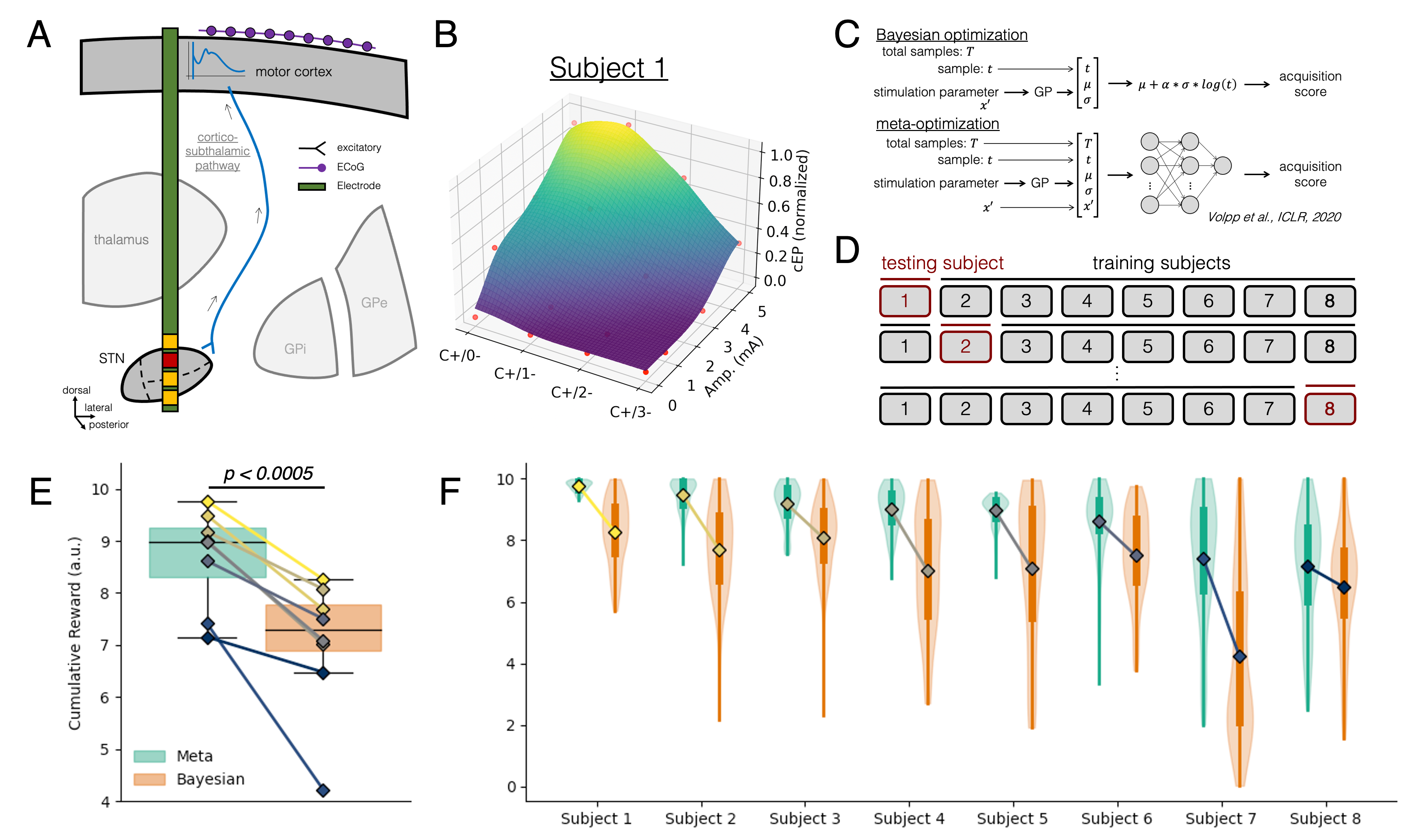Category: Technology
Objective: The objective is to develop an algorithmic approach for selecting deep brain stimulation (DBS) settings for Parkinson’s disease (PD) and other movement disorders more efficiently.
Background: While DBS has become a fundamental tool for the treatment of PD and other movement disorders, a consistent and unavoidable problem is identifying the optimal stimulation setting for each patient. Recently developed DBS devices and electrodes have allowed for more flexible and precise stimulation. Densely packed contacts can be independently stimulated to shape the electric field, targeting pathways of interest, and avoiding those that cause side effects. However, this flexibility comes at a cost. Each additional stimulation parameter or contact causes an exponential increase in the number of potential stimulation settings. Recent work has addressed this using Bayesian optimization. However, Bayesian optimization cannot learn from multiple subjects to improve performance. We evaluated a meta-optimization algorithm for identifying the optimal stimulation setting compared to Bayesian optimization.
Method: We extended a meta-optimization algorithm, based on deep reinforcement learning, to the DBS domain. Data were collected from eight patients with PD undergoing DBS surgery, where an ECoG strip was placed over the motor cortex to measure cortical evoked potentials (cEP) during stimulation of the subthalamic nucleus (1A). Data from each subject were modeled with a Gaussian process (GP; 1B) to evaluate meta-optimization compared to Bayesian optimization. The meta-optimization algorithm learns a policy (1C) by practicing on an initial set of subjects to improve performance on future subjects. The algorithm was evaluated using leave-one-out cross-validation, where it was iteratively trained on seven subjects and tested on the eighth (1D). The goal was to identify the stimulation setting that produced the largest cEP with as few stimulations as possible, thereby maximizing the cumulative reward.
Results: Meta-optimization significantly outperformed Bayesian optimization by 23.6% with a cumulative reward of 8.70±0.92 compared to 7.04±1.28 (p<0.0005; 1E). Improvement was significant across all subjects (1F). [figure1]
Conclusion: These results demonstrate that meta-optimization can learn a policy for finding the optimal subject-specific stimulation setting that outperforms state-of-the-art approaches.
To cite this abstract in AMA style:
M. Connolly, F. Isbaine, J. Willie, R. Gross, A. Devergnas, S. Miocinovic. Meta-optimization to select stimulation settings for deep brain stimulation in Parkinson’s disease [abstract]. Mov Disord. 2022; 37 (suppl 2). https://www.mdsabstracts.org/abstract/meta-optimization-to-select-stimulation-settings-for-deep-brain-stimulation-in-parkinsons-disease/. Accessed April 20, 2025.« Back to 2022 International Congress
MDS Abstracts - https://www.mdsabstracts.org/abstract/meta-optimization-to-select-stimulation-settings-for-deep-brain-stimulation-in-parkinsons-disease/

